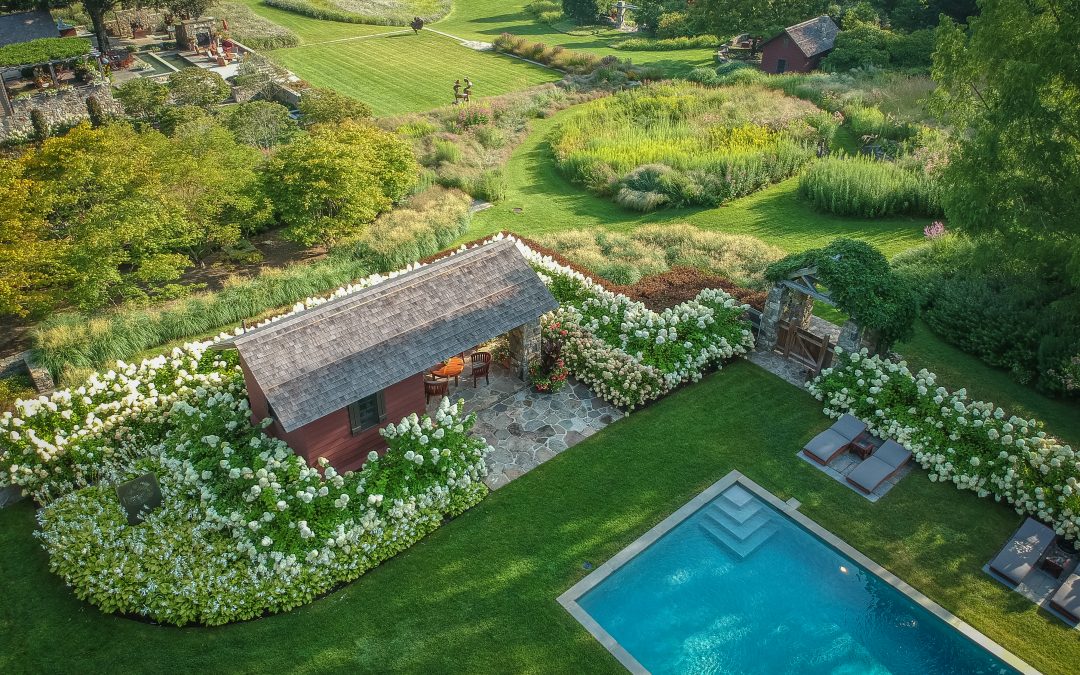It appears wiser than ever these days to heighten our human experience of the natural world and one way to do so is to design emotive, varied, immersive public spaces that beautifully integrate built form, sophisticated horticulture, fine art detailing, and historical knowledge into them. Gardens are cultural artefacts and living entities that work hand-in-hand with nature. But yes, they need a sensitive, ongoing, and watchful eye to ensure the initial intentions are preserved over time.
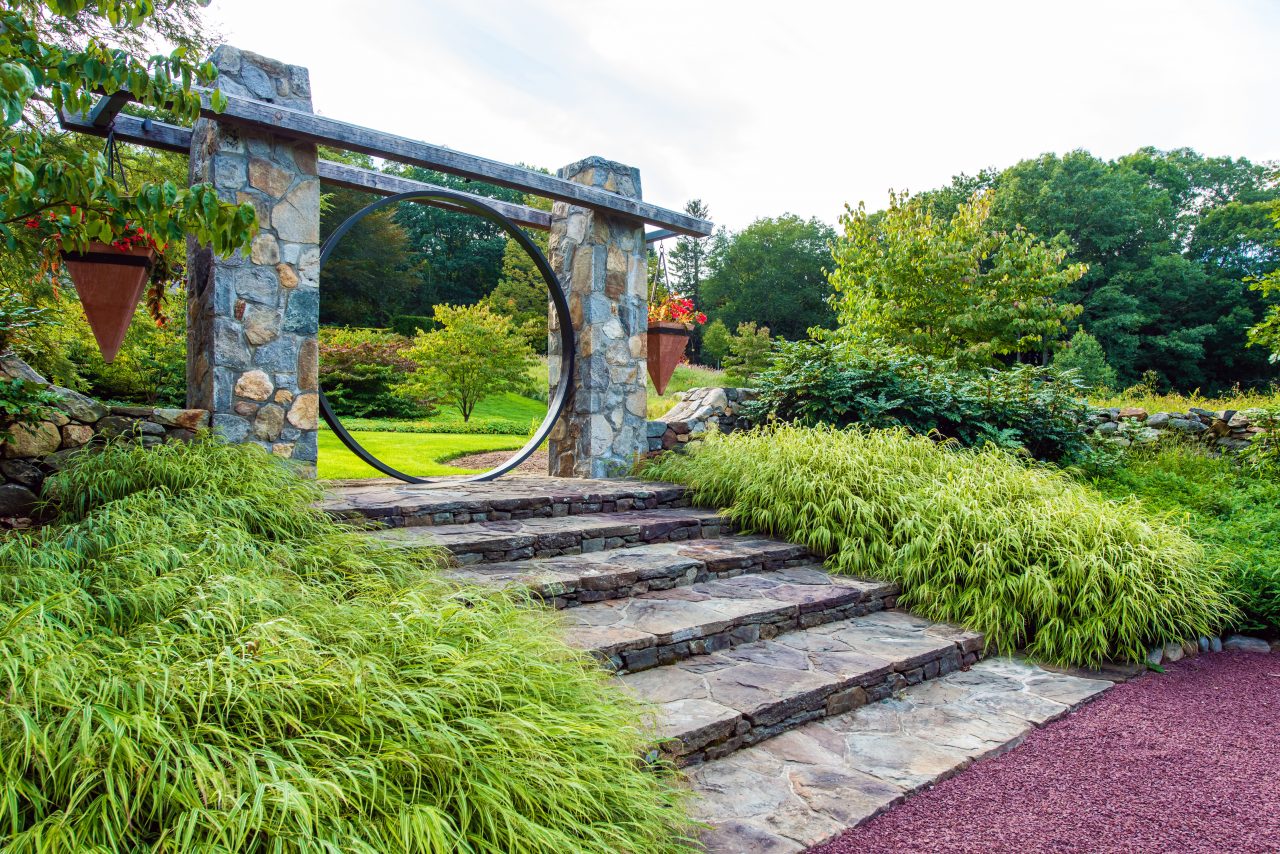
The Moon Gate leads into the woodland garden.
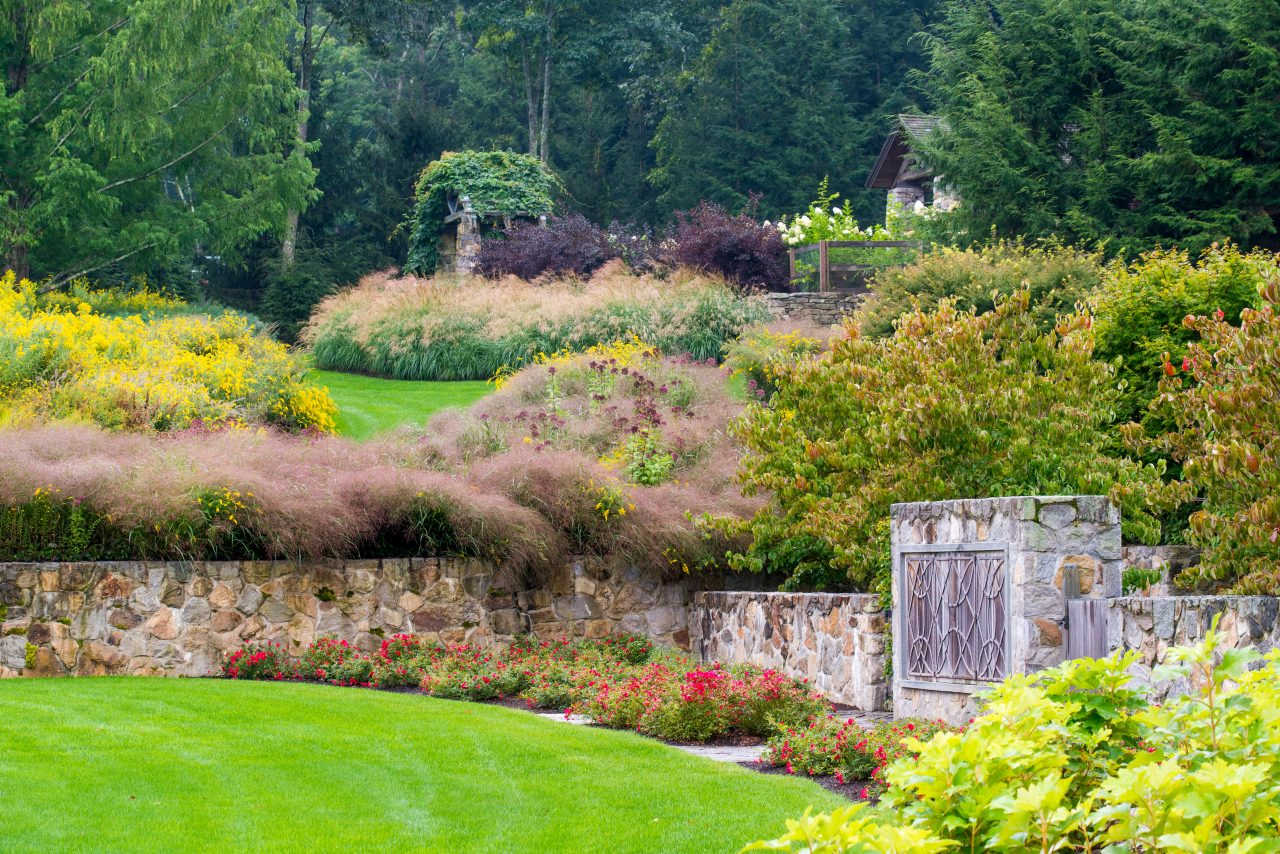
The landscape architecture practice Land Morphology crafted a private green area centred on the site at InSitu Garden as a naturally sustainable project. Water features, an outdoor kitchen, recreational facilities, arbours, walls, portals, terraces, and walks provide a rich and rewarding synthesis of experiences.
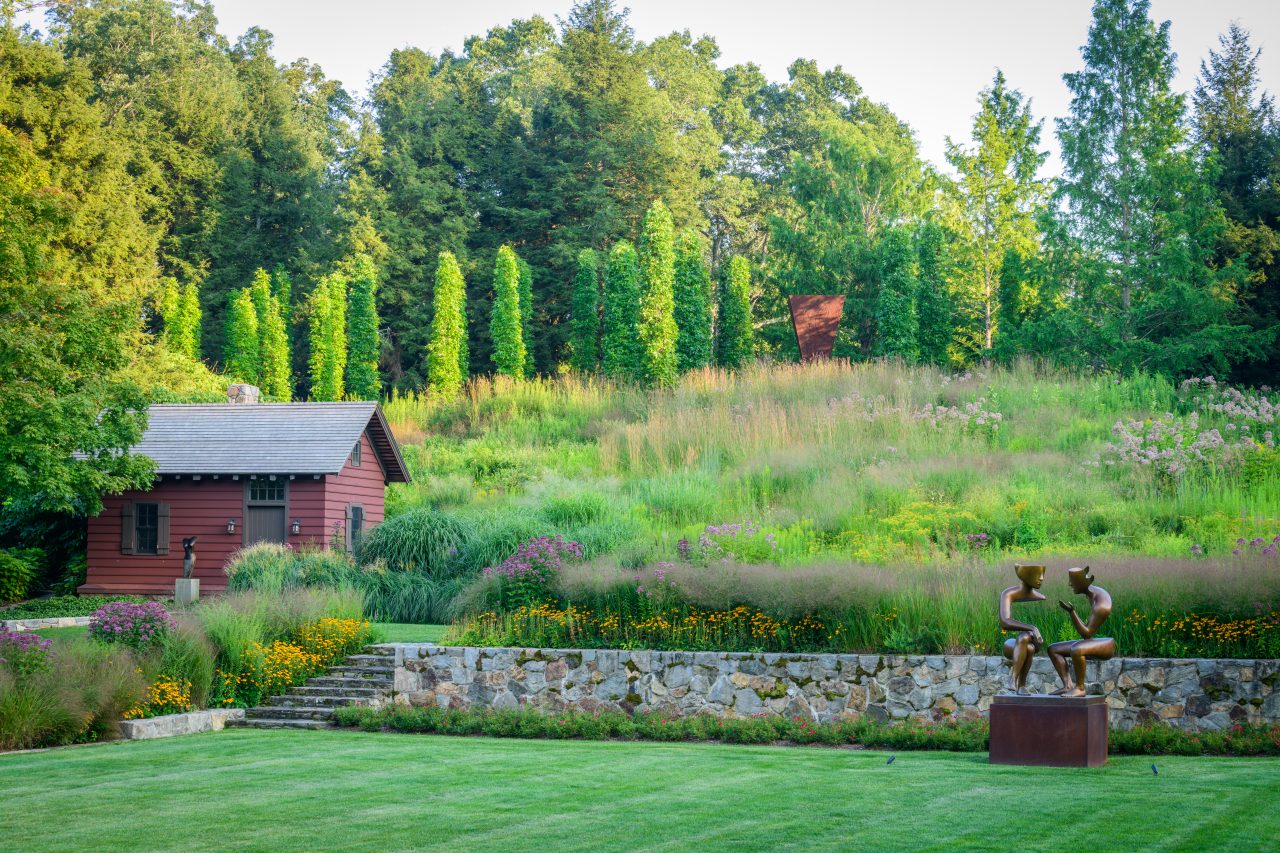
The sauna is nestled at the edge of the meadow.
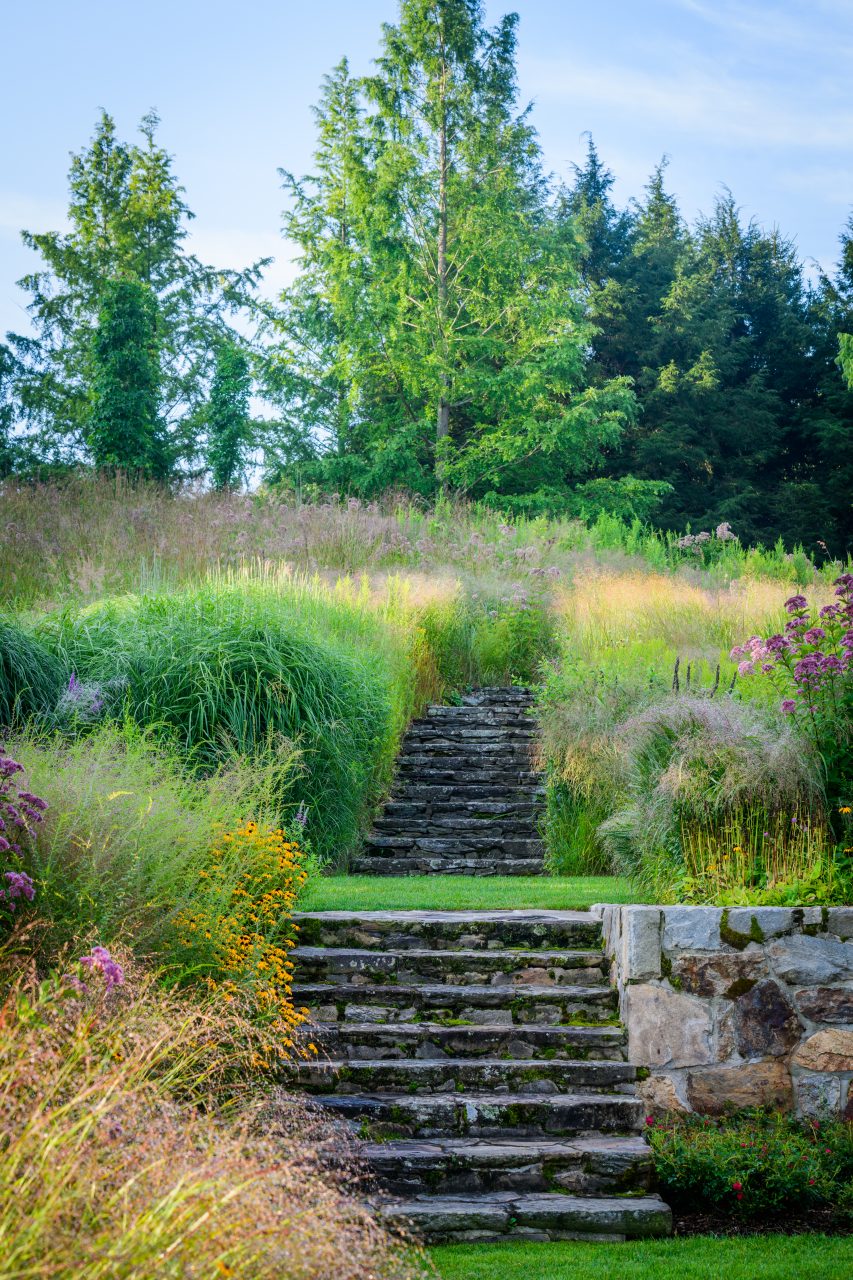
Regional and architectural styles are key components to making places comfortable and timeless. Ideally, designs should respond to the topography of the site, local flora, climate, and seasonal change. Taking care to understand regional building processes and conventions is also part of the programme. Thoughtful consideration of all these variables creates places that ‘fit’ the context.
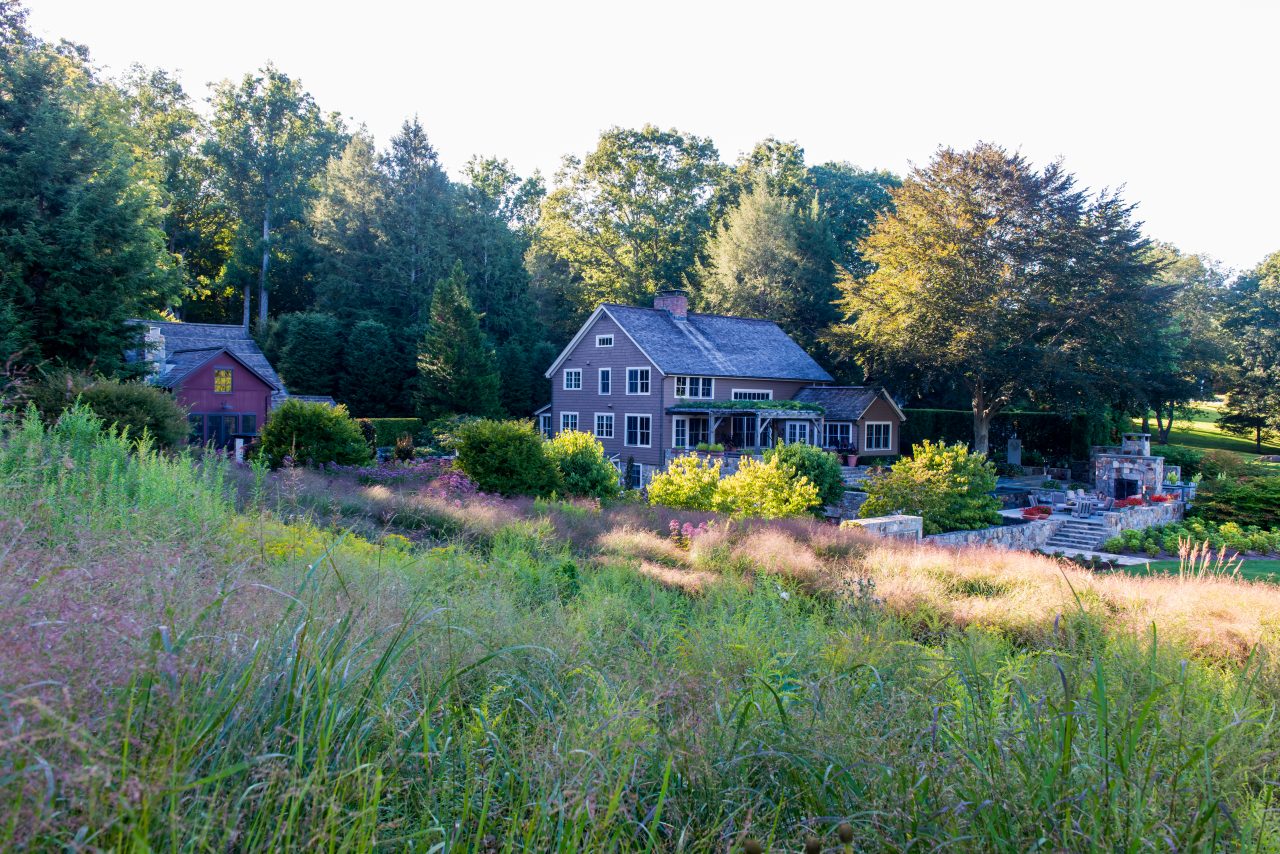
Residence with patio with meadow planting in foreground.
The character of any great landscape is shaped by built elements that define the space. The rich selection of plants and designs provide seasonal change, long-term enjoyment, and ease of maintenance. Founder and CEO of Land Morphology, Richard Hartlage’s direct experience with some of the great gardens of the world, including plant collections in exotic, temperate climates, and even plant breeding, provides a depth of plant and horticultural knowledge that is rare.
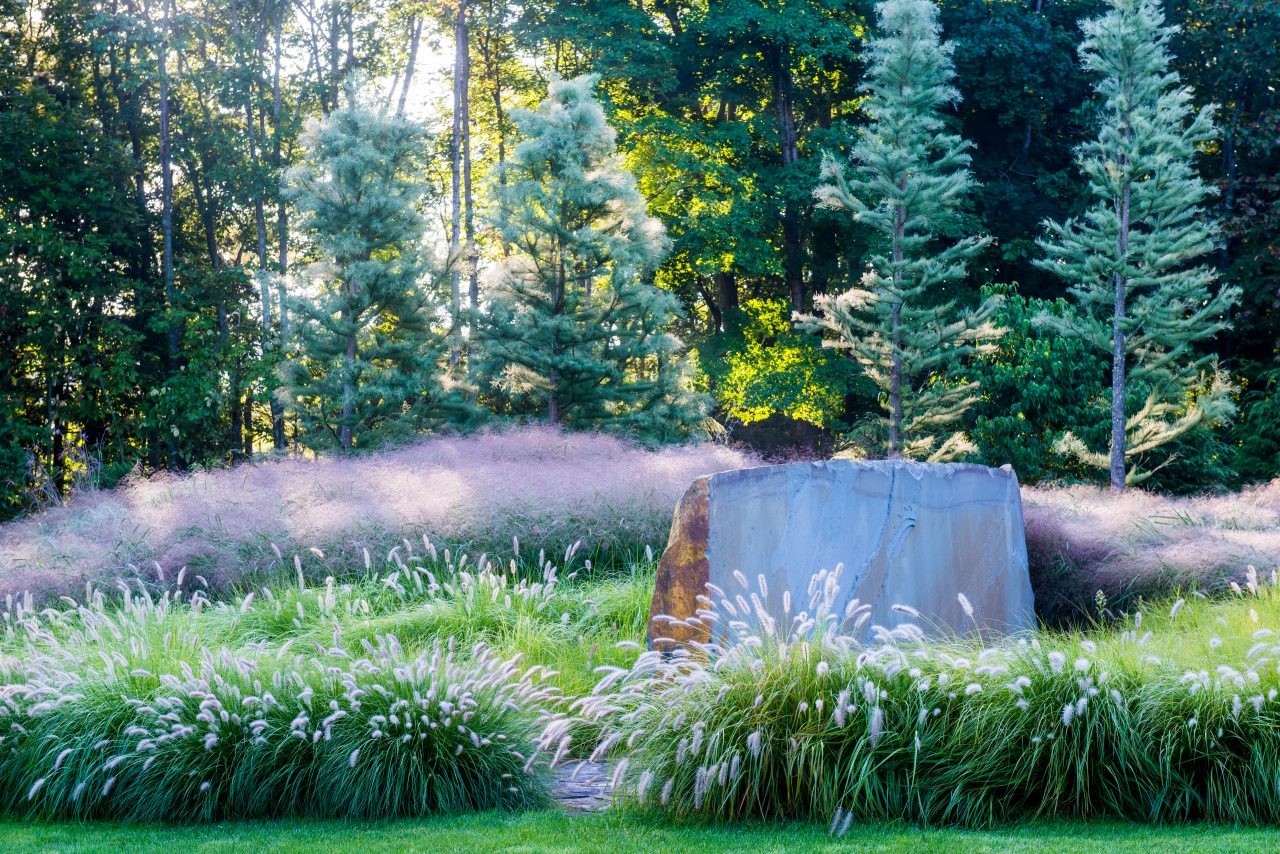
Transitional space to woodland setting
We’re tempted to attune all our senses through InSitu’s structures, rich plantings and art that together evoke a spiritual and emotional calibration. ‘The three hectares are designed as a series of twelve-plus garden rooms that respect meditative qualities, inspiring visitors to relax and form a deeper connection to the land,’ notes Richard Hartlage.
The approach to the property is through a tree-lined lane into a red gravel-surfaced parking court with a central medallion of the cardinal points. The main living terraces step down from the house to a large lawn designed for entertaining.
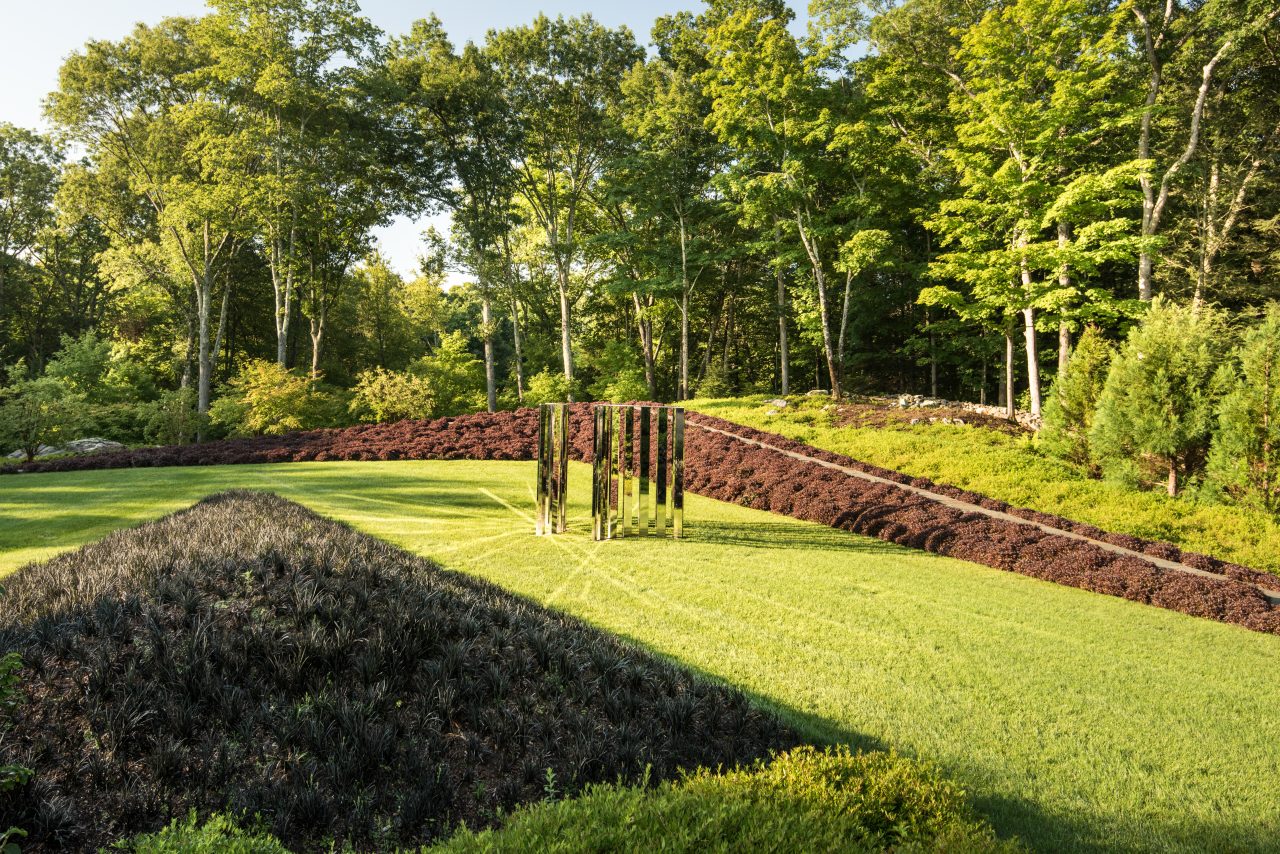
Eight water features act as focal points, helping to organise space and highlight a collection of figurative art that is placed throughout the landscape. A symmetrically organised sunken garden with sentinels of upright beech trees under-planted with roses is visible from the auto court, house and living terraces. The swimming pool and formal fountain garden are set in a picturesque landscape planted with meadows, woodland gardens, and lawns. Each garden room offers expansive vistas through the garden and to the distant hills.
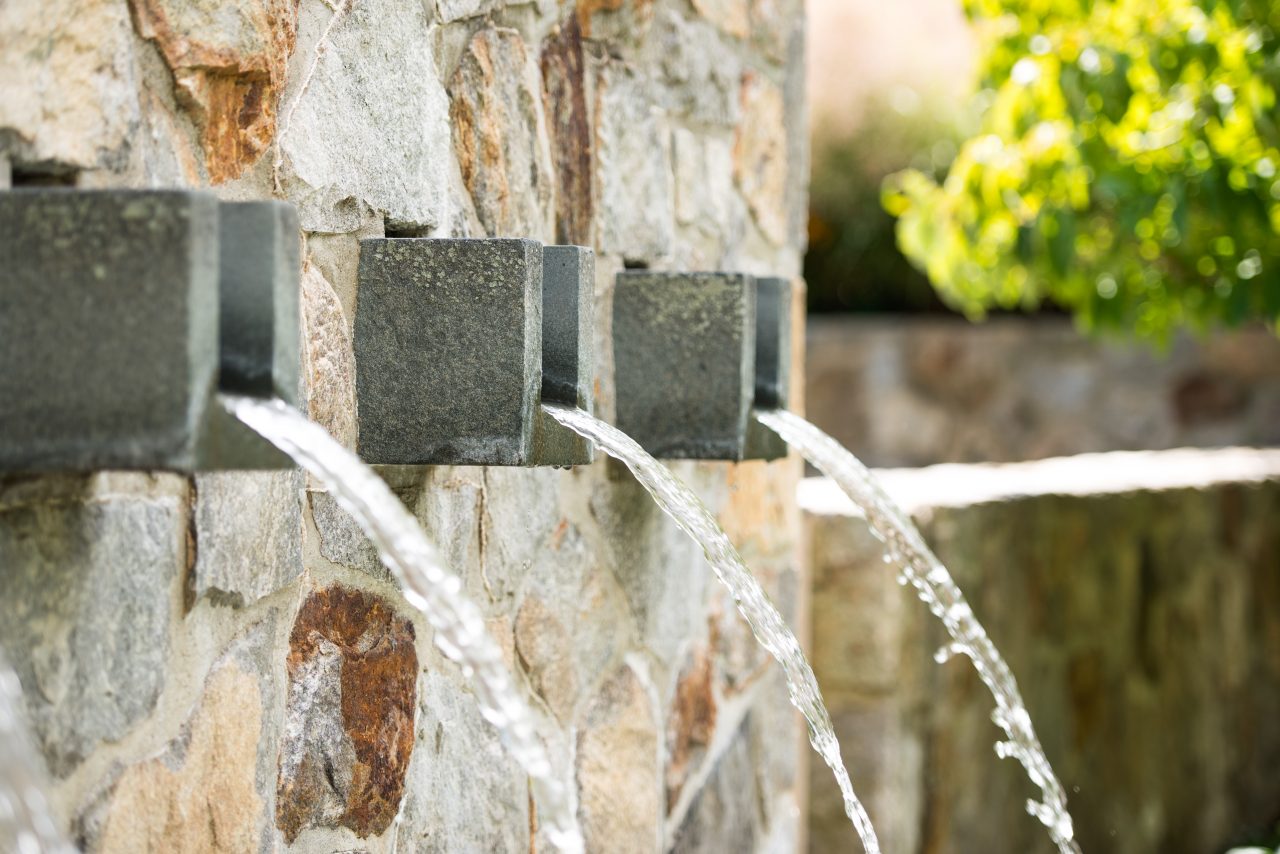
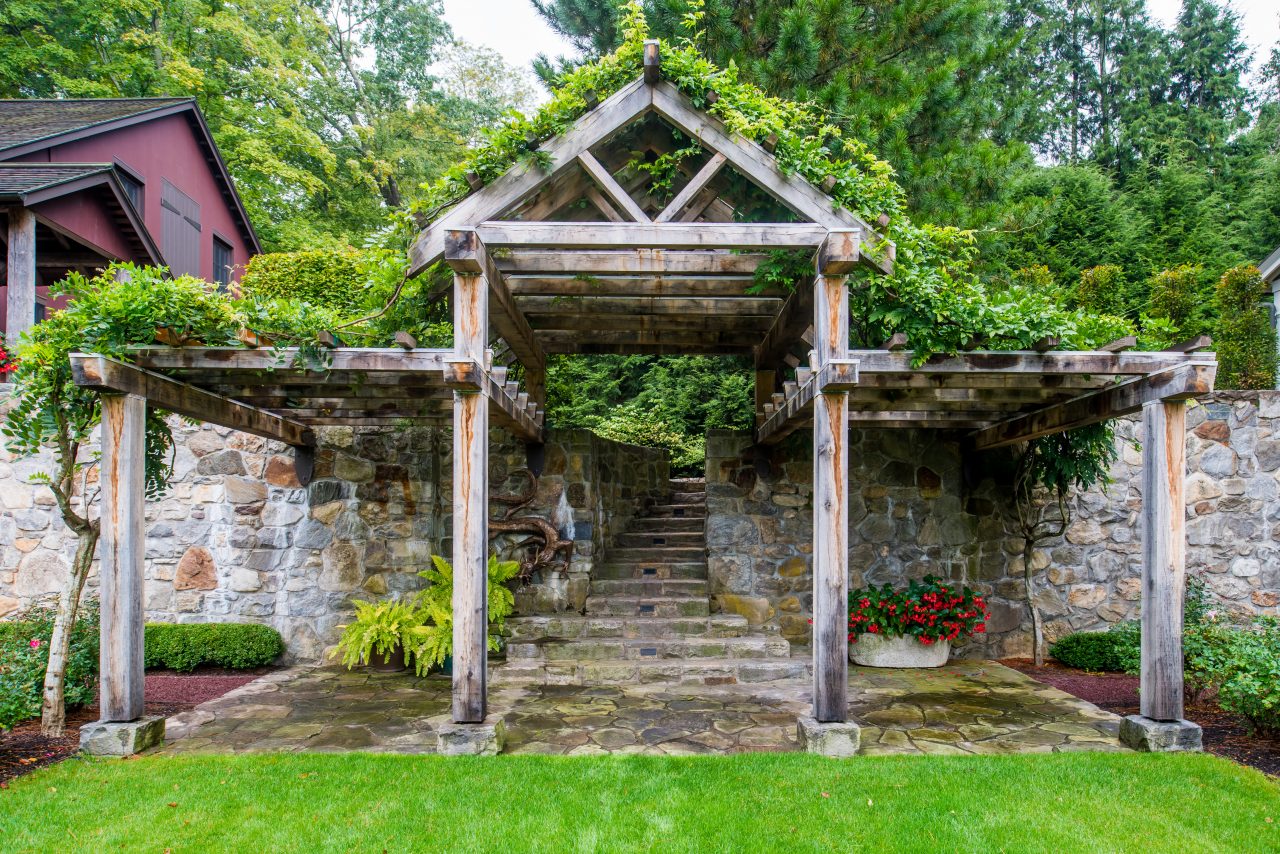
Wooden gateway arbor with stone walls and steps.
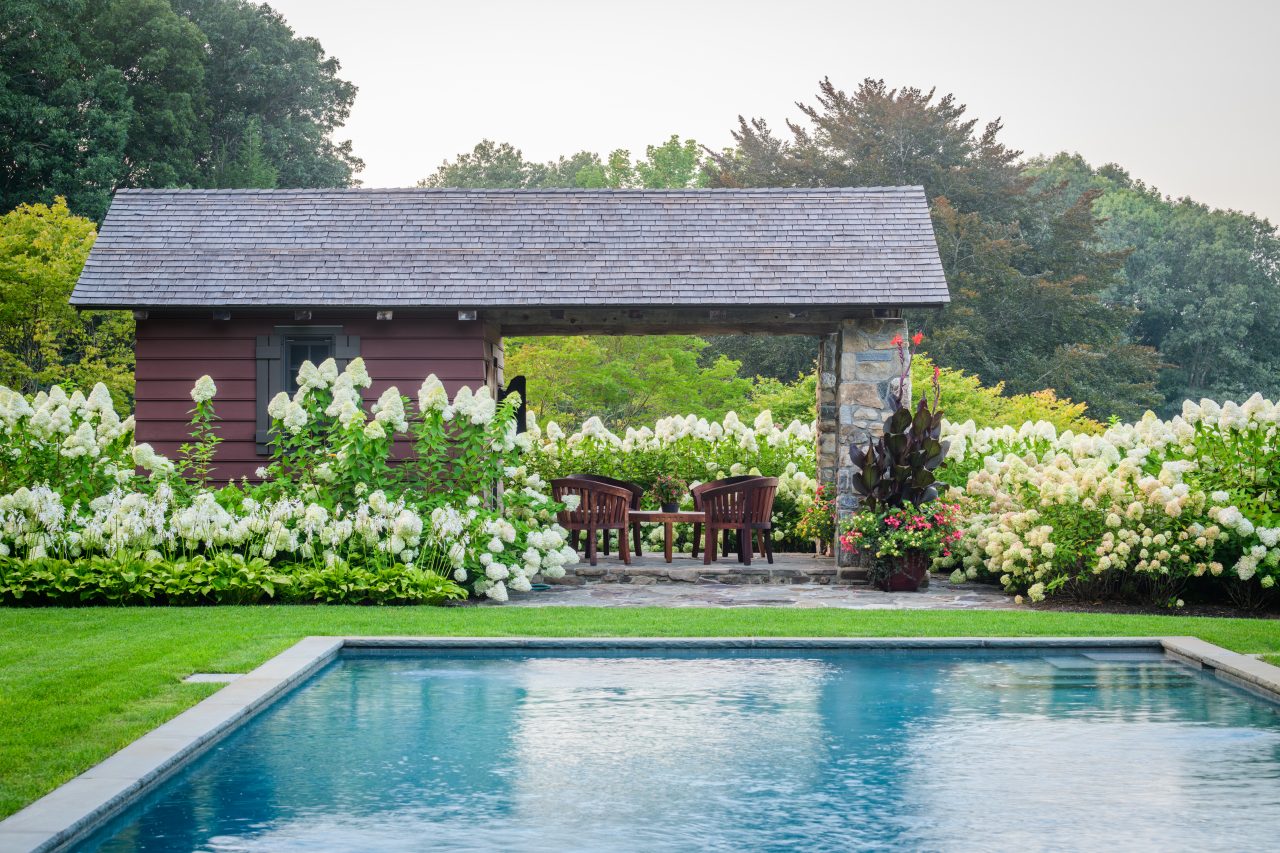
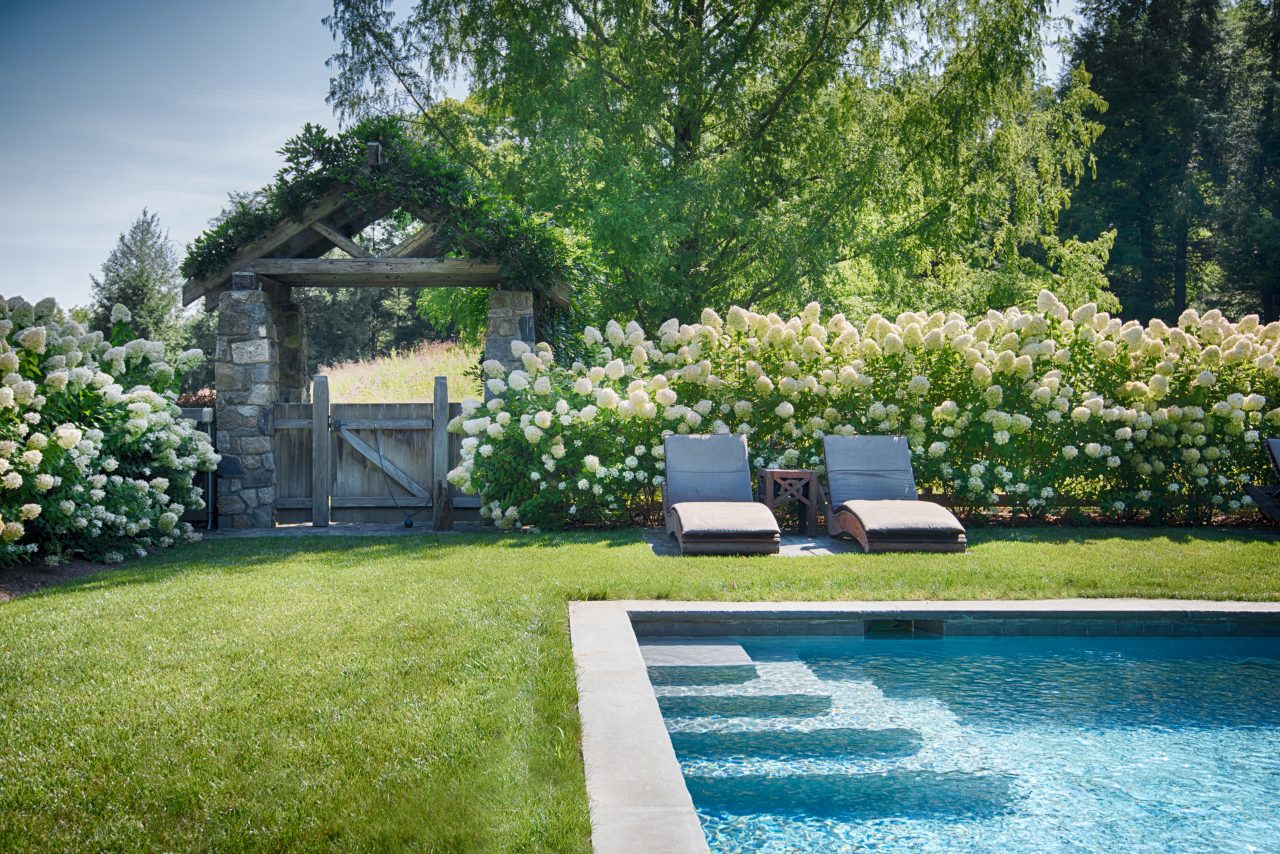
Lounge chairs amongst limelight hydrangea paniculata.
Features in the living spaces include a wisteria-covered rustic arbour, a water feature made from locally sourced and milled white oak, and a dining terrace that is shaded by a 76-year-old copper beech tree. The outdoor kitchen and pizza oven are concealed behind a large-scale outdoor fireplace.
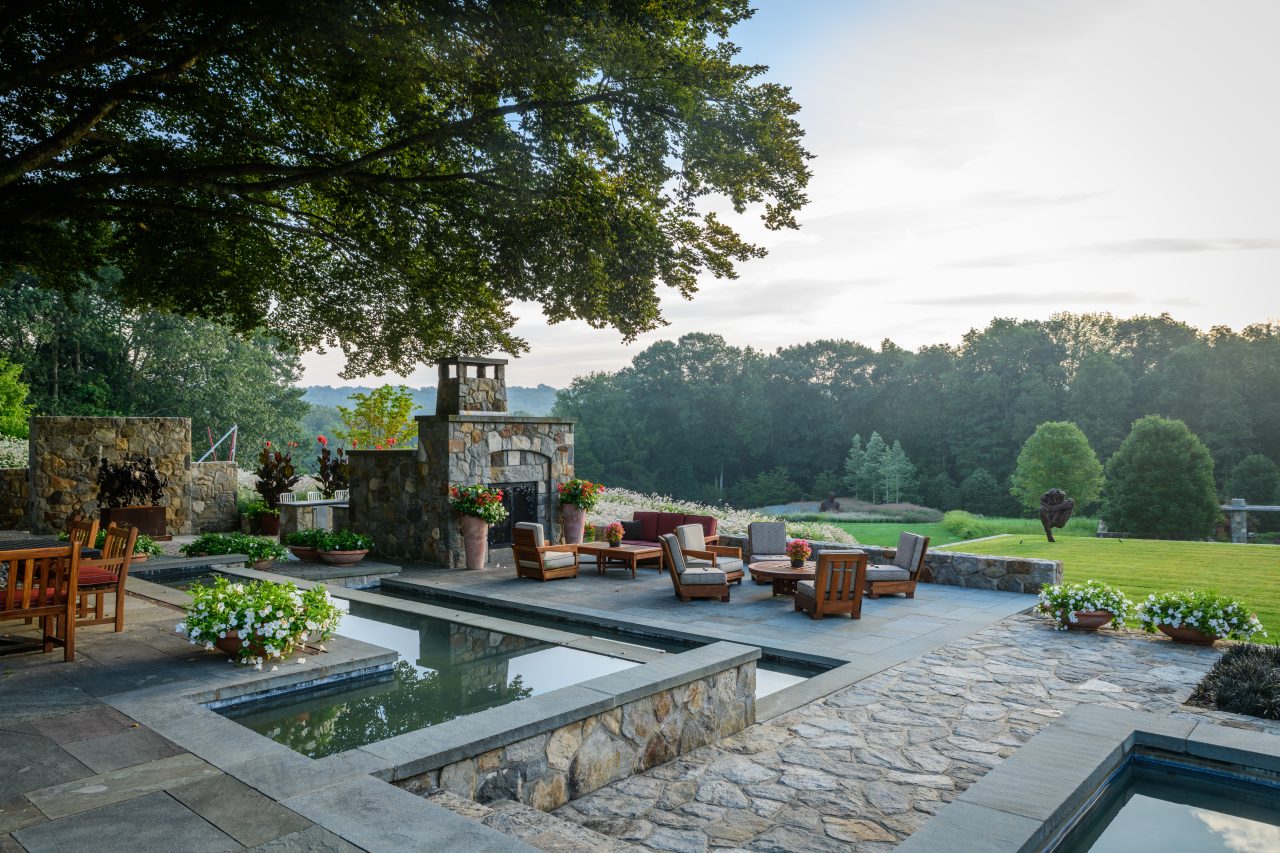
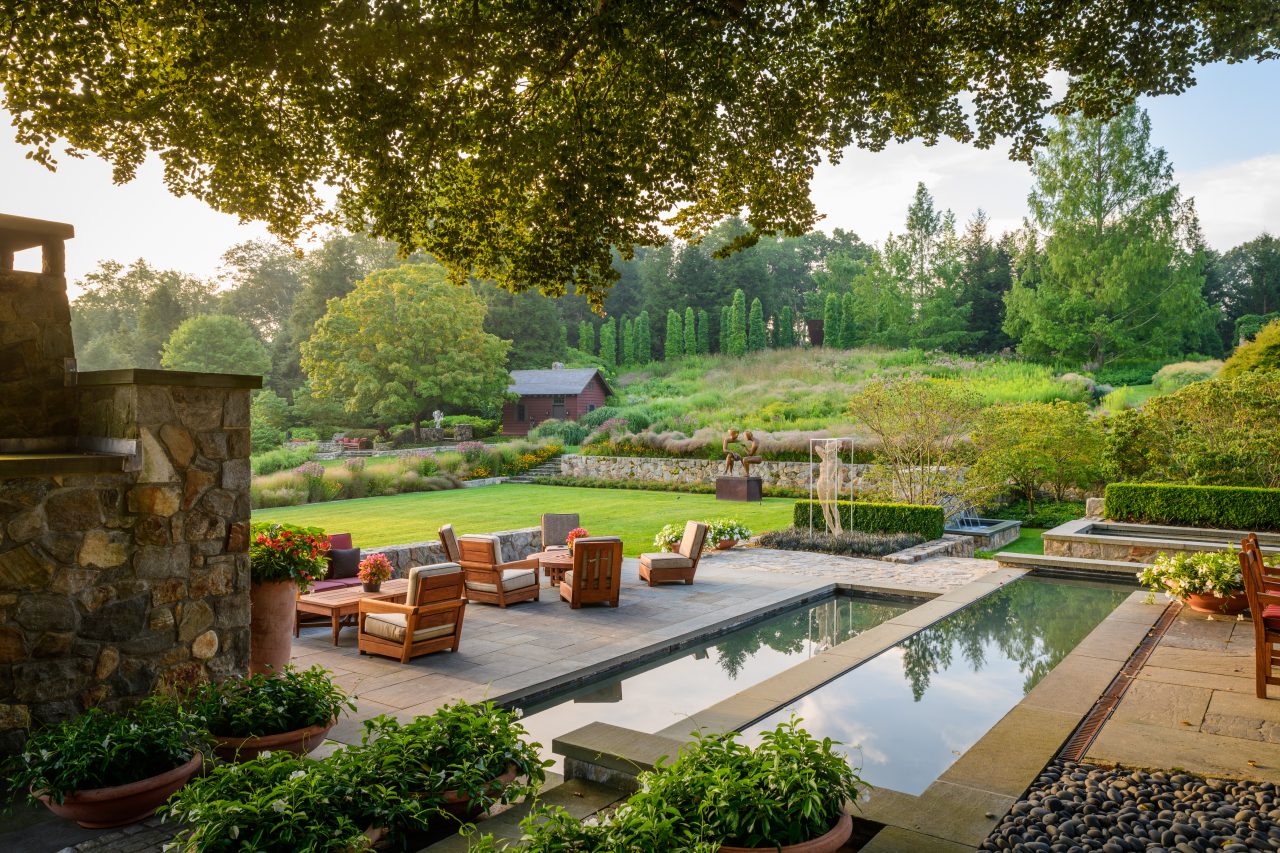
The garden highlights local craft, materials, and details, emphasising a sustainable approach to construction and ongoing maintenance. Stone – including site-collected material and blue stone quarried within 120 kilometres of the garden – is used for terraces and site walls. Plantings are more than 75% native.
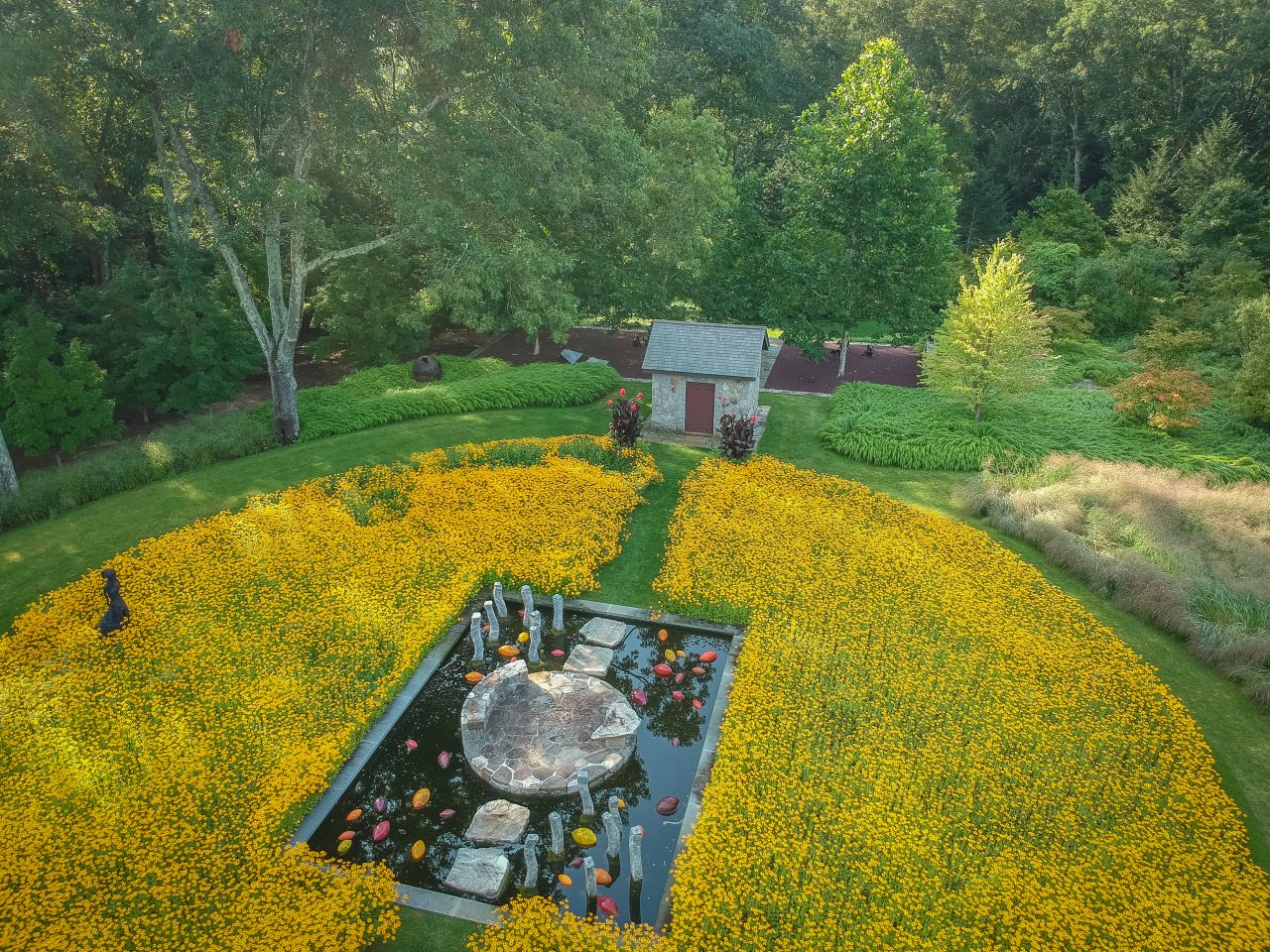
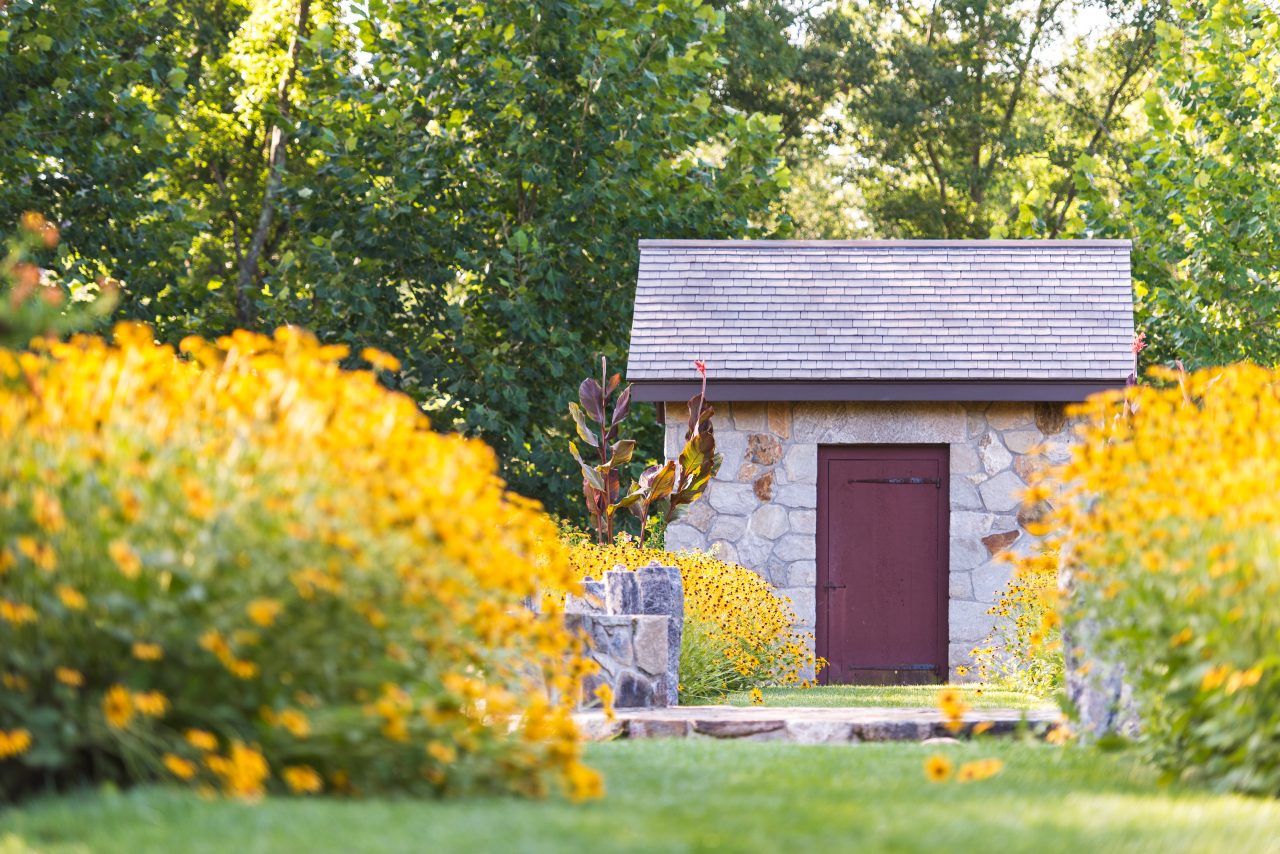
Stone structure amongst rudbeckia fulgida.
‘We tried to capture the essence of the Connecticut landscape by using locally available materials and plants native to the northeast. This consolidates a profound unity in the garden while it serves as a micro-mirror reflecting the beauty of this region as a whole,’ notes Hartlage. This emphasis on native plants provides environmental resiliency and allows the garden to fit beautifully into the Connecticut countryside.
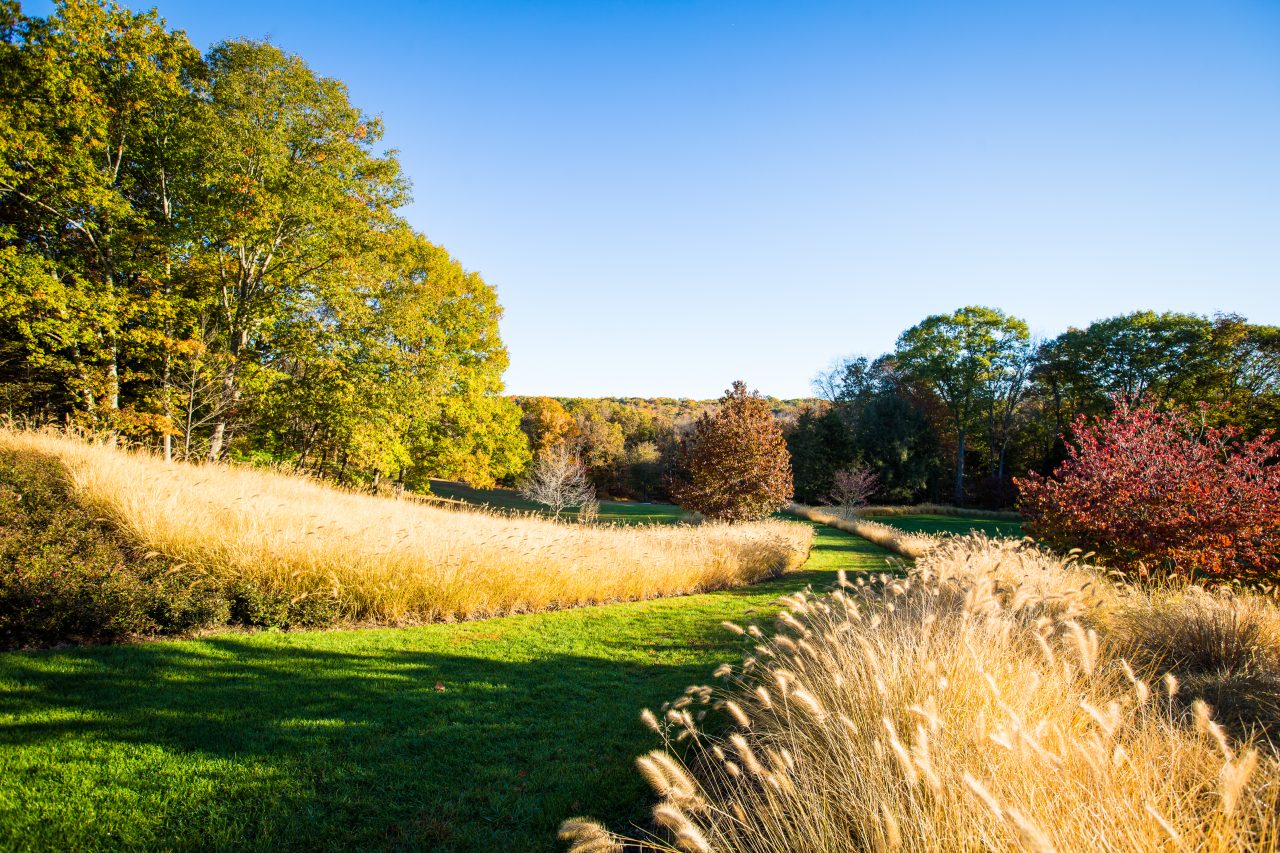
The gardens contemplative character allows for formal entertaining and for a respite from life in New York City. The landscape firm continues to review design intent and maintenance to assure an impeccably managed garden that has been called one of the most significant gardens in Connecticut.
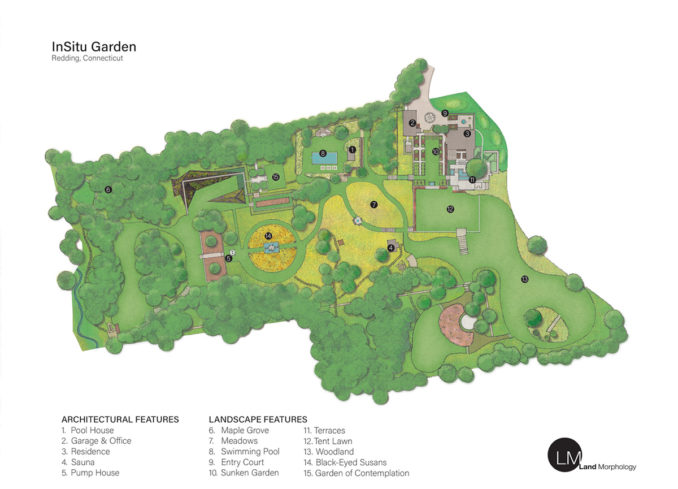
credits:
Land Morphology design team: Richard Hartlage; Renee Freier; Adrian Coerver

